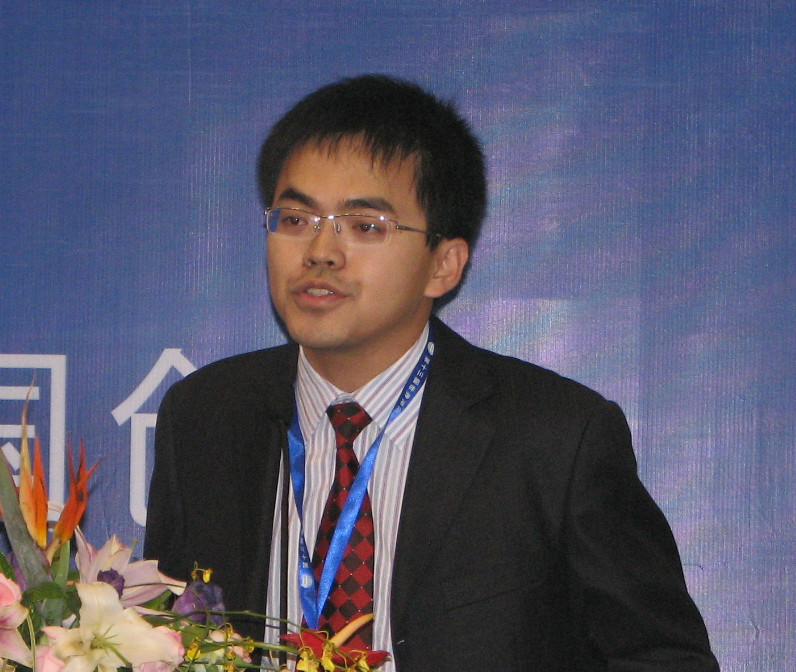吳乾元,清華大學講師, 主要從事再生水水質安全評價與保障技術研究。
基本介紹
- 中文名:吳乾元
- 學位/學歷:博士
個人資料,工作經歷,研究方向,主要成就,個人作品,
個人資料
吳乾元,清華大學講師, 主要從事再生水水質安全評價與保障技術研究。
工作經歷
2012年7月~今 清華大學深圳研究生院講師
2010年7月~2012年6月 清華大學環境學院博士後
研究方向
主要從事再生水水質安全評價與保障技術研究,包括微量污染物檢測技術、生物毒性評價技術、高級氧化技術、安全消毒技術等等。
主要成就
2010.7 清華大學優秀博士畢業生
2010.7 清華大學優秀博士畢業論文
2005.7 北京市優秀本科畢業生
2005.7 清華大學優秀本科畢業生
個人作品
[1]Wang, W.-L., Wu, Q.-Y., Wang, C., He, T., and Hu, H.-Y. (2014) Health risk assessment of phthalate esters (PAEs) in drinking water sources of China. Environmental Science and Pollution Research (in press)
[2]Tian G P, Wu Q Y, Li A, Wang, W. L., and Hu, H. Y. (2014)Enhanced decomposition of 1, 4-dioxane in water by ozonation under alkaline condition. Water Science and Technology (in press).
[3]Tang, F., Hu, H.-Y., Sun, L.-J., Wu, Q.-Y., Jiang, Y.-M., Guan, Y.-T. and Huang, J.-J. (2014a) Fouling of reverse osmosis membrane for municipal wastewater reclamation: Autopsy results from a full-scale plant. Desalination 349, 73-79.
[4]Tang X, Wu QY, Zhao X, Huang H, Shi XJ, Hu HY. (2014a) A fingerprint analysis method for characterization of dissolved organic matter in secondary effluents of municipal wastewater treatment plant. Environ Sci Pollut Res 21:14211–14218.
[5]Tang, X., Wu, Q., Yang, Y. and Hu, H. (2014b) Genotoxicity removal of reclaimed water during ozonation. Journal of Environmental Sciences-China 26(6), 1243-1248.
[6]Tang, X., Wu, Q.Y., Du, Y., Yang, Y. and Hu, H.Y. (2014c) Anti-estrogenic activity formation potential assessment and precursor analysis in reclaimed water during chlorination. Water Research 48, 490-497.
[7]Tang, X., Wu, Q.-Y., Zhao, X., Du, Y., Huang, H., Shi, X.-L. and Hu, H.-Y. (2014d) Transformation of anti-estrogenic-activity related dissolved organic matter in secondary effluents during zonation. Water Research 48, 605-612.
[8]Wu, Q.-Y., Tang, X., Huang, H., Li, Y., Hu, H.-Y., Ding, Y.-N. and Shao, Y.-R. (2014) Antiestrogenic activity and related disinfection by-product formation induced by bromide during chlorine disinfection of sewage secondary effluent. Journal of Hazardous Materials 273, 280-286.
[9]Tang, F., Hu, H.-Y., Wu, Q.-Y., Tang, X., Sun, Y.-X., Shi, X.-L. and Huang, J.-J. (2013a) Effects of chemical agent injections on genotoxicity of wastewater in a microfiltration-reverse osmosis membrane process for wastewater reuse. Journal of Hazardous Materials 260, 231-237.
[10]Tang, X., Wu, Q.-Y., Huang, H., Hu, H.-Y. and Li, Q. (2013b) Removal potential of anti-estrogenic activity in secondary effluents by coagulation. Chemosphere 93(10), 2562-2567.
[11]Huang, H., Wu, Q.-Y., Tang, X., Jiang, R. and Hu, H.-Y. (2013) Formation of haloacetonitriles and haloacetamides during chlorination of pure culture bacteria. Chemosphere 92(4), 375-381.
[12]Wu, Q.-Y., Li, Y., Hu, H.-Y., Ding, Y.-N., Huang, H. and Zhao, F.-Y. (2012) Removal of genotoxicity in chlorinated secondary effluent of a domestic wastewater treatment plant during dechlorination. Environmental Science and Pollution Research 19(1), 1-7.
[13]Huang, H., Wu, Q.-Y., Hu, H.-Y. and Mitch, W.A. (2012) Dichloroacetonitrile and Dichloroacetamide Can Form Independently during Chlorination and Chloramination of Drinking Waters, Model Organic Matters, and Wastewater Effluents. Environmental Science & Technology 46(19), 10624-10631.
[14]Zhang, X., Zhao, X., Zhang, M. and Wu, Q.-y. (2011) Safety evaluation of an artificial groundwater recharge system for reclaimed water reuse based on bioassays. Desalination 281, 185-189.
[15]Huang, H., Wu, Q.-Y., Yang, Y. and Hu, H.-Y. (2011) Effect of chlorination on endotoxin activities in secondary sewage effluent and typical Gram-negative bacteria. Water Research 45(16), 4751-4757.
[16]Sun, Y.-X., Wu, Q.-Y., Hu, H.-Y. and Tian, J. (2010) Effect of bromide on the formation of disinfection by-products during wastewater chlorination. Water Research 44(3), 1024-1024.
[17]Wu, Q.-Y., Hu, H.-Y., Zhao, X. and Li, Y. (2010a) Effects of chlorination on the properties of dissolved organic matter and its genotoxicity in secondary sewage effluent under two different ammonium concentrations. Chemosphere 80(8), 941-946.
[18]Wu, Q.-Y., Hu, H.-Y., Zhao, X., Li, Y. and Liu, Y. (2010b) Characterization and identification of antiestrogenic products of phenylalanine chlorination. Water Research 44(12), 3625-3634.
[19]Wu, Q.-Y., Li, Y., Hu, H.-Y., Sun, Y.-X. and Zhao, F.-Y. (2010c) Reduced Effect of Bromide on the Genotoxicity in Secondary Effluent of a Municipal Wastewater Treatment Plant during Chlorination. Environmental Science & Technology 44(13), 4924-4929. 2010.7
[20]Wu, Q.-Y., Hu, H.-Y., Zhao, X. and Sun, Y.-X. (2009) Effect of Chlorination on the Estrogenic/Antiestrogenic Activities of Biologically Treated Wastewater. Environmental Science & Technology 43(13), 4940-4945.
[21]Sun, Y.-X., Wu, Q.-Y., Hu, H.-Y. and Tian, J. (2009a) Effects of operating conditions on THMs and HAAs formation during wastewater chlorination. Journal of Hazardous Materials 168(2-3), 1290-1295.
[22]Sun, Y.-X., Wu, Q.-Y., Hu, H.-Y. and Tian, J. (2009b) Effect of ammonia on the formation of THMs and HAAS in secondary effluent chlorination. Chemosphere 76(5), 631-637.
[23]Sun, Y.-X., Wu, Q.-Y., Hu, H.-Y. and Tian, J. (2009c) Effect of bromide on the formation of disinfection by-products during wastewater chlorination. Water Research 43(9), 2391-2398.

